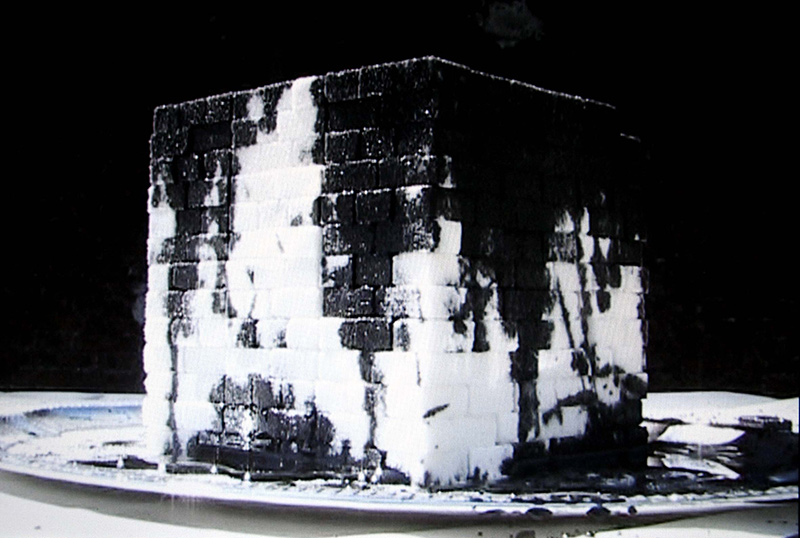France/Algeria
Cora Johnson-Grau
Oil and sugar, faith and void, global and local. The work of Kader Attia evokes tensions not from straight oppositions but from a nuanced melding, transaction, translation, and appropriation of culturally significant elements in minimalist, multi- media forms.
Born in 1970 to Muslim immigrants in Dugny, France, a banlieue in Northeast Paris, Attia spent most of his life travelling between his family there and in Algeria. The banlieue’s mix of Western consumerism and poverty, viewed through the lens of his familial North African culture, gave him intimate insight into the lives of immigrant families. This process of constant cultural translation, along with his propensity for drawing, served as a starting point for his development as an artist. From 1996 to 1998, he attended the École Nationale Supérieure des Arts Décoratifs in Paris.
In the last 20 years, Attia has worked prolifically across various media in an ongoing exploration of “the Other” in Western culture. Attia’s recent works have relied heavily on minimalist forms, in particular their architectural and spatial reflections.

Video on DVD
4:30 min, color, with sound
Courtesy of Kader Attia and
Galerie Nagel Draxler, Berlin
In Oil and Sugar #2, blackness and whiteness, the solid and the liquid, enact a convergence and slow destruction. Recalling the spatial and architectural similarities between the cubes of sugar and the cubic form of Islam’s most sacred shrine, the Kaaba, the work conjures the deep symbolic significance of oil for Western interests in the North African and Middle Eastern world and the deceptive sweetness and colonial memory of sugar. Melding and melting these economic and cultural forces, Attia’s Oil and Sugar #2 succeeds with simplicity and minimalist form in making a statement about geopolitical realities.
